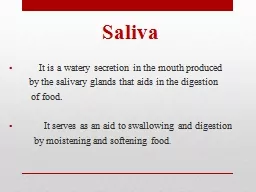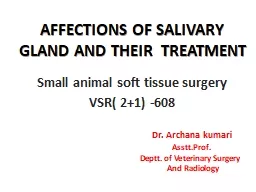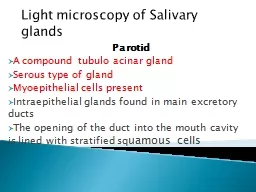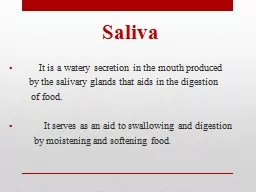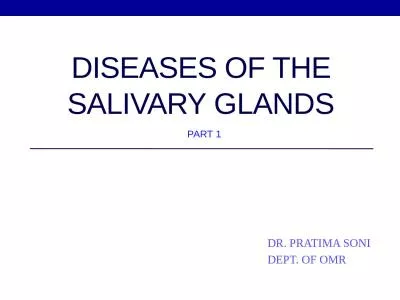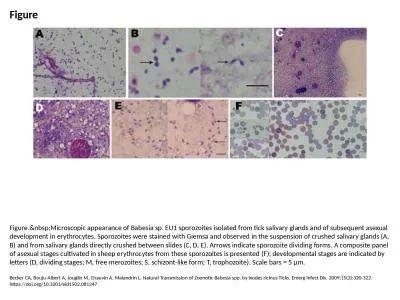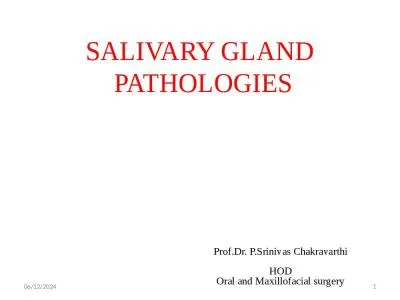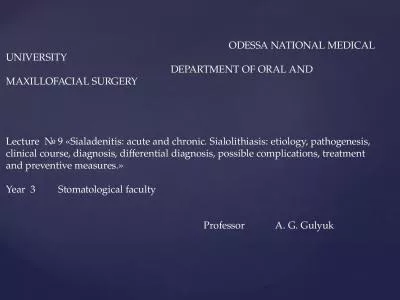PPT-Histology of Salivary Glands
Author : kittie-lecroy | Published Date : 2016-04-27
What is a gland Gland is an organ of secretion made up of specialized secretory cells derived from the surface epithelium on which it opens General Features Epithelial
Presentation Embed Code
Download Presentation
Download Presentation The PPT/PDF document "Histology of Salivary Glands" is the property of its rightful owner. Permission is granted to download and print the materials on this website for personal, non-commercial use only, and to display it on your personal computer provided you do not modify the materials and that you retain all copyright notices contained in the materials. By downloading content from our website, you accept the terms of this agreement.
Histology of Salivary Glands: Transcript
Download Rules Of Document
"Histology of Salivary Glands"The content belongs to its owner. You may download and print it for personal use, without modification, and keep all copyright notices. By downloading, you agree to these terms.
Related Documents



